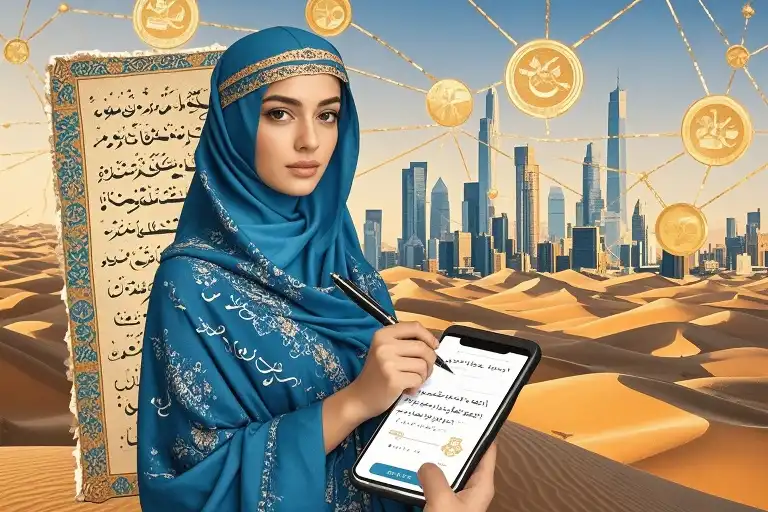Do you remember your first literary love affair? Mine began with a book cover shimmering under fluorescent lights – a swirling Arabic calligraphy circle that seemed to whisper secrets. At 28, working my third café job after college, that accidental discovery in the Queens Public Library’s “World Literature” section (tucked between Tolstoy and Twain, how quaint) rewired my understanding of storytelling.
The Syrian poet Nizar Qabbani’s translated works felt like deciphering constellations. His verses swung wildly between burning love letters and blistering anti-colonial manifestos. But here’s what nobody told me then: this was merely the appetizer in Arabia’s literary feast. The real revolution came when I stumbled upon women’s voices – voices that had been singing through deserts and cities for fourteen centuries.
When Books Talk Back: My Crash Course in Literary Blindspots
Let’s address the elephant in Western libraries: our obsession with “great men” narratives. We’ll dissect Hemingway’s fishing trips but glaze over 7th-century poet Al-Khansa mourning her brothers in verse so devastating, it became battlefield ritual. Why does this matter? Because Arabic literature doesn’t just write history – it breathes it.
That dog-eared Qabbani anthology taught me three radical things:
- Poetry as oxygen (Not some elitist accessory!)
- Beauty as resistance (Those swirling letters were artistic armor)
- My education had gaps wider than the Sahara
“But where are the women?” I kept wondering, until…
Time-Traveling Through Pages: Meet Your New Literary Guides
7th Century: Al-Khansa’s Battlefield Elegies
Imagine Maya Angelou writing funeral songs that warriors recited before charging into battle. Now replace the Mississippi Delta with Arabian dunes. Al-Khansa’s poems weren’t just art – they were cultural adrenaline, preserving tribal histories through women’s grieving voices.
10th Century: Andalusia’s Ink-Stained Revolutionaries
While Europe huddled in Dark Ages, Cordoba’s princess Wallada bint al-Mustakfi hosted poetry salons… in gold-embroidered sleeves dipped in ink. Her verse? “I’m meant for greatness, walking pridefully/Granting my kisses to those I deem worthy.” Move over, Shakespearean sonnets.
2020s: Digital-Age Story Weavers
Fast-forward to Yemeni-Egyptian author Bushra al-Maqtari’s WhatsApp novel Hurma – serialized texts about war survival that went viral across Arabic phones. Or Emirati poetess Amal Al-Sahlawi using Instagram visuals to reinvent classical Nabati poetry.
Lost in Translation? Found in Connection!
Here’s where I confess: my first foray into Arabic literature felt like hugging through glass. The translated metaphors clinked oddly in English. But when I discovered female translators like Marilyn Booth rendering Saudi author Raja Alem’s work? Magic.
Why women translators matter:
- Preserve linguistic nuances about domestic spaces
- Navigate cultural taboos around women’s bodies
- Channel ancestral storytelling cadences
The Feminist Press’s Arabic Women Writers series became my Rosetta Stone. Suddenly, Syrian author Colette al-Khouri’s 1960s Beirut divorcees were chatting with me like coffee-shop confidantes.
Your 1,400-Year Reading Starter Kit
Let’s swap that overwhelmed feeling with a curated adventure. Here are works that became my compass:
| Century | Work & Author | Why It Shines |
|---|---|---|
| 7th | Elegies by Al-Khansa | Raw grief transforming into cultural DNA |
| 10th | Wallada’s Diwan | Medieval sexual politics with sass |
| 1926 | Memoirs of a Woman Doctor by Nawal El Saadawi | Egyptian feminism’s Big Bang |
| 2023 | The Book of Queens by Joumana Haddad | Beirut’s punk-rock poetry matriarch |
Why Your Bookshelf Needs This Revolution
Reading these works isn’t about ticking diversity boxes. It’s about:
- Seeing deserts as living libraries (Every dune holds stories)
- Hearing silenced laughter (Yes, Arab women joke about dating apps too!)
- Understanding politics through family kitchens (Where revolutions simmer)
That initial Qabbani cover’s Arabic circle? I later learned it was a rub el hizb – an Islamic symbol representing unity and the eternal. How perfect. These women’s stories showed me literature’s true shape: endless, connecting, and dazzlingly alive.

